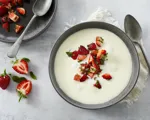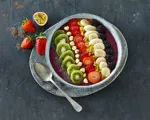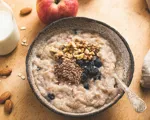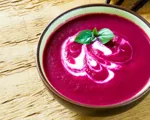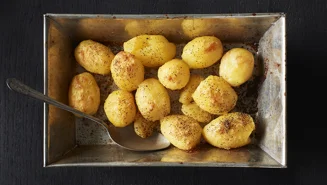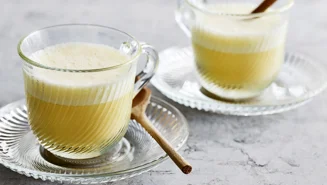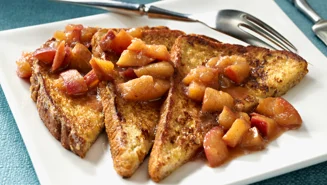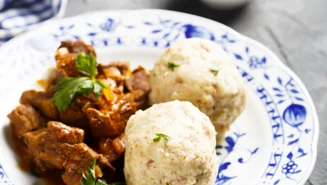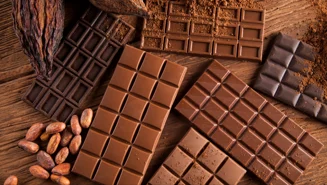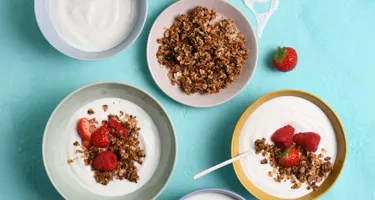
Yogurt is a beloved dairy product enjoyed worldwide for its creamy texture and tangy taste. Some consume it as a snack or breakfast, while others incorporate it into traditional dishes like tzatziki, raita, or labneh.
The variety in how yogurt is used around the world shows how versatile and universally loved it is. Whether it takes on a supporting role, takes the spotlight, or becomes a blank canvas for culinary creativity, it never fails to satisfy taste buds everywhere.
In the following, we will explore the diverse world of yogurt, delving into its various types, flavours, and styles. From the indulgent richness of Greek-style and Greek yogurt to the uniquely creamy Icelandic-style skyr, we will uncover distinct characteristics, production methods, and qualities of each type.
What is yogurt?
Yogurt is a dairy product made from fermented milk. It is made by adding specific strains of bacteria, typically Lactobacillus bulgaricus and Streptococcus thermophilus, to milk. These bacteria convert lactose, the natural sugar in milk, into lactic acid. This process results in its characteristic tangy flavour and thick, creamy texture.
Yogurt can be made from different types of milk, such as cow's, goat's, or sheep's milk. It is also available in various forms, including full-fat, low-fat, and fat-free, catering to different dietary preferences. In addition to its appealing taste and texture, yogurt can be a good source of protein.
Discover our top 5 yogurt types
There are many different types of yogurt out there, and we have gathered information on our top 5 varieties: Skyr, Greek and Greek-style yogurt, kefir, quark, and labneh. While all these varieties originate from yogurt, they undergo different production methods, resulting in distinct textures, flavours, nutritional compositions, and culinary applications.
Skyr
Skyr is a traditional Icelandic-style dairy product similar to yogurt but with a unique taste and consistency. It has gained popularity outside of Iceland in recent years due to its relatively high protein content and low fat content.
Arla® Fat-Free skyr delivers a delightfully thick and creamy texture while maintaining a 0 % fat content. It is made from only two ingredients, namely skimmed milk and yogurt cultures. Inspired by the Icelandic traditions that involve adding a touch of cream to skyr, the original version has been given a new twist with our Arla® Extra Creamy skyr. This revamped version retains its signature thickness, but the addition of cream takes it to another level of creaminess, now with a 5 % fat content.
Skyr is commonly enjoyed on its own or mixed with fruits, berries, or honey and can also be an ingredient in a wide range of recipes, including smoothies, desserts, and baked goods. Read more in our article Can you cook with skyr?.
You can also take a look at our articles How long does skyr last once opened?, and Can you freeze skyr? if you want to know everything about the Icelandic-style dairy darling.
How is skyr different from yogurt?
Skyr and yogurt differ in production process, texture, taste, and nutritional content. Skyr is known for its thick and creamy texture and higher protein content. It has a fresh, natural taste but is less sweet than yogurt. Contrary, yogurt has a smoother texture, varying taste profiles, and may have different fat contents. While skyr is made by straining skim milk, yogurt is produced through milk fermentation. Both products can be enjoyed in various ways and used in many dishes.

Greek yogurt
Greek yogurt holds a special distinction as a protected title, meaning it must be produced in Greece using a unique production method that ensures its exceptional quality. However, other countries produce similar dairy products inspired by Greek yogurt. These are called Greek-style yogurt. Similar to skyr, Greek and Greek-style yogurt are renowned for their thicker and creamier consistency compared to traditional yogurts.
Greek yogurt and Greek-style yogurt are known for their creamy, velvety texture and tangy flavour. Both can be enjoyed as a satisfying snack on their own and are also versatile ingredients in cooking as well as baking. They commonly serve as a base for sauces, dips, and dressings and are often used as an alternative to, for example, crème fraiche or mayonnaise due to the lower fat and higher protein content. Because of just that, Greek and Greek-style yogurt are frequently compared to skyr. However, there are several distinguishing factors between the two dairy types, which you can read about in our article Skyr vs Greek yogurt.

Kefir
Kefir is a fermented milk drink made by adding kefir grains to milk, which results in a bubbly effervescence. It offers a tangy flavour and a creamy texture. With its believed origins in the Caucasus Mountains region, kefir has gained popularity worldwide.
It is a versatile product that can be used in a variety of dishes, adding a delicious twist to smoothies, salad dressings, sauces, and marinades. Unlike thicker yogurt-based alternatives like skyr or Greek yogurt, kefir has a thinner consistency, making it enjoyable as a refreshing drink. Read our article Skyr vs kefir to learn more about the unique qualities that set kefir apart.

Quark
Contrary to kefir's pourable consistency, quark has a thicker, creamier texture. It can be classified as fresh cheese, as it is made by curdling milk with an acid. The curds and whey separate, and the curds are strained to create quark, a creamy and slightly tangy fresh cheese.
Although its thicker texture may be reminiscent of, for example, skyr, there are variations in both taste and production processes, which you can explore further in our article Quark vs skyr. Quark adds versatility to your everyday cooking by being suitable for a wide range of recipes. It can be used in spreads, dips, baked desserts, and salad dressings and pairs easily with both sweet and savoury dishes.
How is quark different from yogurt?
The main differences between quark and yogurt lie in production, texture, taste, and culinary use. While both are dairy-based products, the differences in the production process result in different flavour profiles and textures. Quark has a mild and slightly tangy flavour, and with its smooth, creamy texture, it is considered a fresh cheese. Yogurt, on the other hand, is a fermented milk product with a tangy taste and a smoother, slightly thinner texture.

Labneh
Another popular type of yogurt commonly found in Middle Eastern and Mediterranean cuisine is labneh. While it is often compared to soft cheese like cream cheese, it is, in fact, a strained yogurt variety. The straining involves removing the whey from yogurt, creating a thick and creamy texture. The tangy taste and smooth, creamy consistency have made labneh a preferred choice to replace cream cheese or crème fraiche in numerous recipes.

